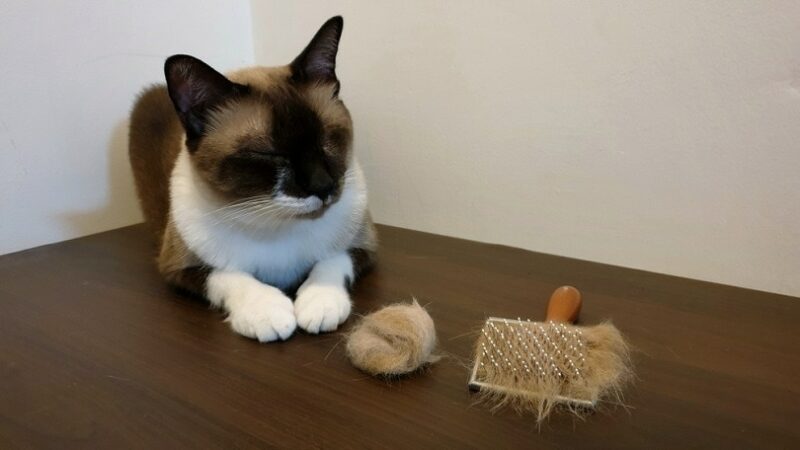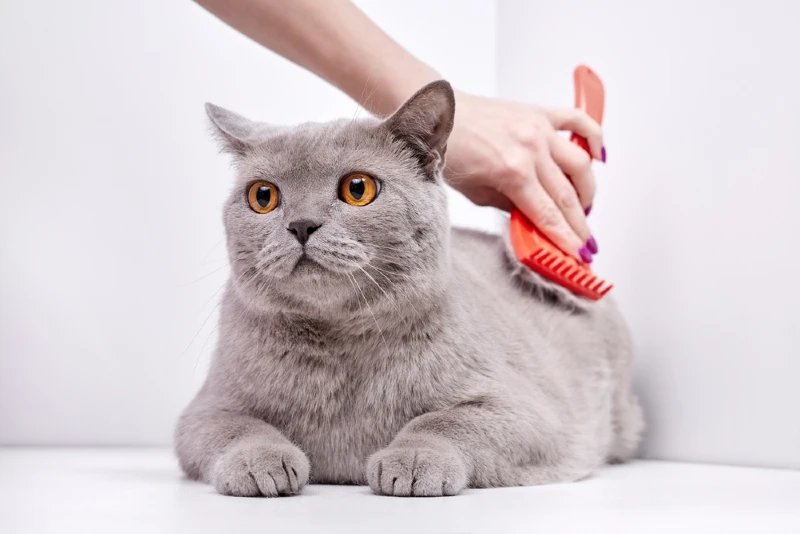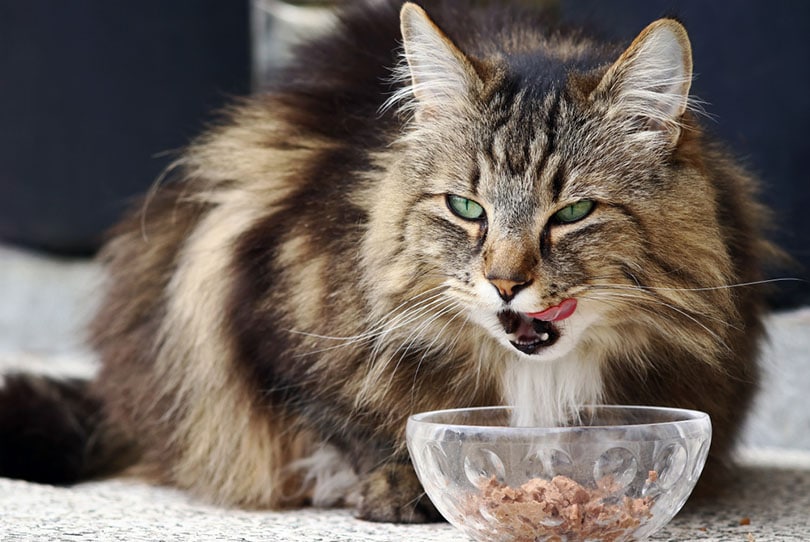
Click to Skip Ahead
Hairballs are one of the most unpleasant things that arise when you own a cat. Every cat owner knows the sound of a cat attempting to hack up a hairball. The sound usually wakes you from a dead sleep because it typically is occurring on top of your bedspread or your nicest rug!
Hairballs can be caused by a few things, and if they occur frequently, you may need to talk to your vet about supplements or foods to reduce hairballs. However, if your cat seems to have trouble getting their hairballs out, could they possibly choke? What kind of risks can hairballs pose to your cat?

Can Hairballs Cause Choking?
Yes, large hairballs could cause your cat to choke. This is a possibility when they become too large to easily pass back from the stomach and through the esophagus. If your cat seems to be having a lot of difficulty passing a hairball, you may need to take them to the vet to prevent choking or blockages. Excessive but unsuccessful hacking, gasping, wheezing, or the motion of hacking or vomiting without any sound can all be indicators that your cat is choking.
Large hairballs also pose a risk to your cat because they can cause an intestinal obstruction, which can be life-threatening and may require surgical intervention to remove.

How to Help a Choking Cat
If your cat is choking, the first thing you should do is perform a mouth sweep, which will allow you to remove any obstruction that is in the mouth or back of the throat. It’s possible for your cat to get a hairball up this far but not successfully eliminate it.
If the mouth sweep is unsuccessful, you will need to perform a Heimlich maneuver specifically for cats. Do this by holding your cat upright with their back against your chest and then performing swift, upward thrusts on your cat’s upper belly area. Do this up to five times, and if your cat is still choking, you will need to hold it upside down by the hips and perform another mouth sweep. If that hasn’t worked, perform a few firm pats on your cat’s back and perform another mouth sweep. If your cat is still choking, restart the Heimlich steps.
Choking is an immediate medical emergency that requires intervention much more quickly than taking your cat to the vet. Begin performing emergency measures at home. If it’s possible, have someone drive you and your cat to the closest vet while you continue lifesaving attempts in the car.

The 4 Tips on How to Prevent Hairballs
1. Brushing
Hairballs are primarily caused by your cat’s regular grooming routine when they have excess loose hair. By increasing the frequency with which you brush your cat, you can help remove loose hair, reducing the amount that your cat unintentionally swallows when grooming. Frequent brushing can be beneficial for cats with long and short coats alike.

2. Hairball Laxatives
Hairball laxative products are easy to find in pet stores and vet clinics. If you’re unsure of which product to choose for your cat, your vet will be able to guide you in choosing the best one. These laxatives help lubricate hairballs, allowing them to pass through your cat’s digestive tract more efficiently, as well as helping hair move from the stomach before full hairballs can form.
3. Hairball Control Food
Moisture-rich cat food is the best option to prevent hairball formation. Additionally, cat food made specifically for hairball control is a great option to help prevent hairballs. These foods are formulated with high fiber content to help improve digestion for your cat, allowing swallowed hair to safely pass through the digestive tract. These foods also are often formulated with nutrients to improve the health of your cat’s skin and coat and to reduce excess shedding.

4. Encourage Appropriate Grooming
Overgrooming can occur for multiple reasons, including stress, pain, and skin problems. If your cat is overgrooming, they may be grooming to the point of removing healthy hairs and swallowing them, as opposed to just swallowing normal shed hair. By determining what’s causing your cat’s overgrooming and then implementing changes to fix it, you will not only reduce their risk of hairballs but also help your cat feel better.

Conclusion
Although rare, cats can choke on hairballs, which can be a scary experience for both of you. If your cat does choke, they should immediately be taken to a vet, even if you’ve successfully removed the obstruction causing the choking. Controlling the production of hairballs will help keep your cat safer and more comfortable. This may involve increasing your brushing frequency, making dietary changes, or finding ways to reduce overgrooming.
See also:
- What And When Is National Hairball Awareness Day?
- Is It Possible for a Hairball to Kill a Cat? Facts & FAQ
Featured Image Credit: RJ22, Shutterstock






